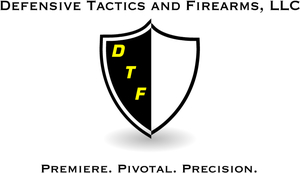Written by: Morgan Ballis
There are many mistakes made by those who choose to conceal carry. Few will make it to the range even once a month and others almost never at all. For those who do step into a shooting booth, they will often only shoot at a static target from a static position. As they comfortably take their time to get into a good shooting position they will engage their target and attempt to stitch the tightest groups possible.
Their firearm will never break leather. In fact, there will be no resemblance to how they actually conceal carry at all. There will be no searching and assessing for threats, escape routes, cover, or to break the tunnel vision that accompanies high stress situations. They will not vocalize for their paper target to stop, stay back, or drop the weapon. They will not shoot and move, shoot while moving, shoot from cover, or any position that may be uncomfortable or realistic in any way.
There will be no speed reloads or malfunctions worked into the training. The only stress factor will be the embarrassment of a round outside of the neat little group they have created. No retention position, no support hand shooting, no realism and no real training accomplished.
Once an applicant receives their concealed weapon permit, they will almost never seek additional training or take another class if they had to even take a class to begin with. They will not crack a single book on the legal aspects of concealed carry or armed self-defense. Most individuals who conceal carry will simply tuck their permit proudly into their bill fold, put their strong side holster at 3 o'clock, and venture out into the world naively believing they are prepared to not only stop a threat but to face the legal repercussions that may follow.
What can be worst than the failure to train with real world standards in a stress induced environment? Not having a plan for what you will do after an armed self-defense scenario. This goes beyond searching and assessing. This is more than knowing what to say to the 911 operator or how to interact with law enforcement once they are on scene. The most overlooked aspect of concealed carry is getting self-defense "insurance". You carry a firearm to protect yourself from the horror's of this world so why wouldn't you carry protection for the legal nightmare that will follow?
To clarify, there is no such thing as self-defense insurance as insurance cannot make any payments while a criminal case is being pursued. What most people refer to as self-defense insurance is more appropriately called a membership. This membership can provide money for bail, retainer for a local attorney, covering the cost of a criminal defense team, work compensation, civil suit coverage, and even accidental death/injury coverage.
There are a number of organizations who provide this kind of membership. I personally use SecondCallDefense and in the spirit of transparency will disclose that I am a recruiter for their program. As I tell all my students when it comes to pistol selection, holster purchases, or self-defense memberships, "Do your research." Based off of the research I conducted, SecondCall was the best fit for me and my family. With plans starting at just $8.99 a month and the ability to add my spouse for just $5.00, I knew I was on to something good. SecondCall also offers it's members the ability to fluctuate their plan from month to month.
What really made me go with SecondCall was the free education they offered to members. Webinars, online forums, and free admission to seminars across the country would give me access to information that would prepare me to knowledgeably speak to law enforcement after I had survived an attack. This information would also provide great insight and considerations to pass on to my students.
Again, I encourage everyone to conduct their own research but above all else get a membership! Even if you do not carry firearms outside of the home your home owner's insurance more than likely WILL NOT provide any sort of financial relief when you INTENTIONALLY use a firearm for self-defense. Do not sacrifice the life savings and nest egg you have built for retirement to only a cover a small fraction of the legal fees that will follow an armed self-defense situation.
Morgan is the owner and Chief Firearms Instructor of Defensive Tactics and Firearms. Morgan spent eleven years as an infantryman in the United States Marine Corps. Morgan is also an NRA Law Enforcement Instructor and a Certified Anti-Terrorism Force Protection Specialist.

